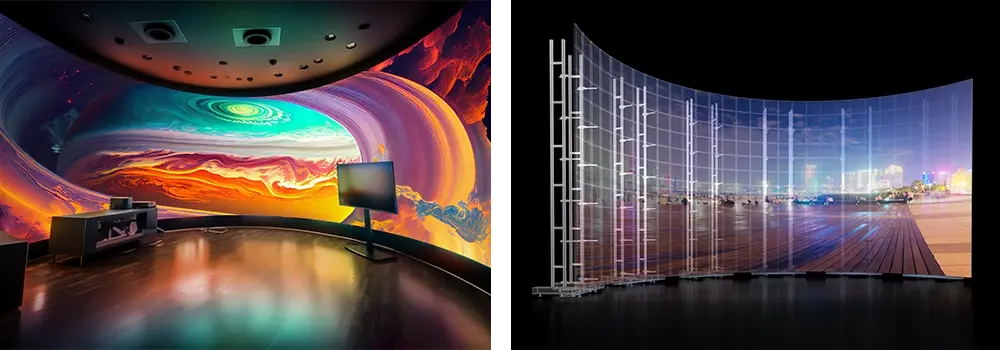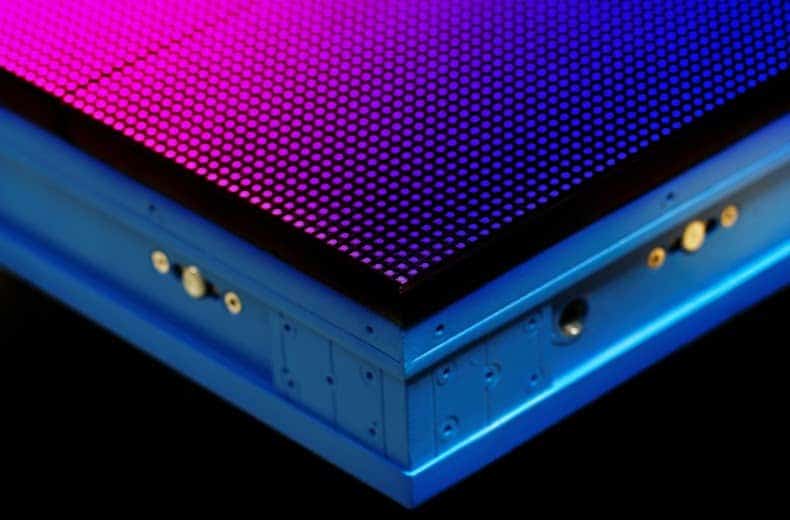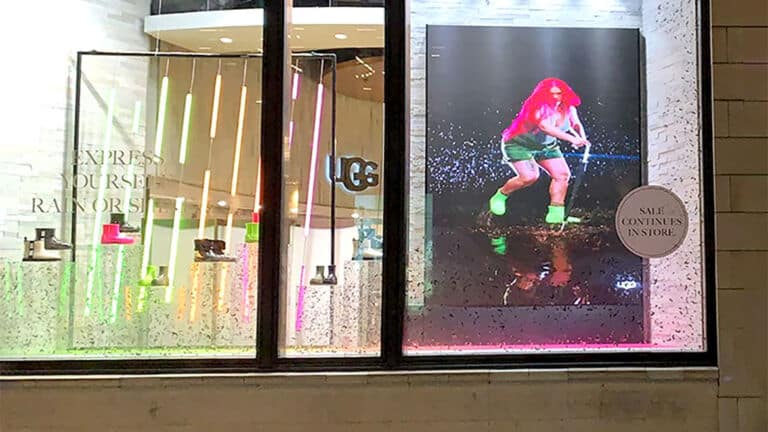Top News On Choosing 3d Led Display
Wiki Article
How Important Are The Brightness And Contrast Ratio When Analyzing Led Displays?
The brightness and contrast ratio are crucial aspects to take into consideration when researching LED displays since they significantly impact the visibility as well as the clarity and performance of the display, especially in different lighting conditions. These factors are crucial:
1. Visibility in Different Lighting Conditions
Brightness: In Nits (candelas) per square meters, brightness is a measure of how well viewed the display will appear in various lighting conditions. For outdoor displays, where ambient light is bright (like direct sunlight), high brightness (typically between 5,000 and 10,000 Nits or greater) is necessary to ensure the display is clear and visible. Indoor displays generally require lower levels of brightness (around 500-1500 nits) however, the brightness should be adjustable to accommodate various environments.
It is crucial to have a high brightness when the display is placed in brightly-lit environments or outside. A display that is too dim will be ineffective as content will become faded or inaccessible when exposed to direct sunlight.
2. Image Quality and Clarity
Contrast ratio The contrast is the contrast in brightness between the lightest white and darkest of black. A higher contrast ratio enhances the depth of images by making colors more vibrant and increasing the overall clarity and sharpness of the content. This is particularly important when you are displaying high-quality content, like videos or images with high contrast.
Displays that have high contrast ratios can handle content that has different brightness levels. This includes films advertisements, movies, and live broadcasts. For instance, on the case of a display with low contrast dark areas may appear gray, reducing the visual impact of content.
3. Color Accuracy and Visual Impact
Color Accuracy and Brightness The brightness of a display plays a crucial role in color accuracy. Color accuracy is improved by a display that has an even brightness. This is crucial for advertising, branding and other areas of content in which color accuracy is crucial.
Contrast can enhance the perceived brightness. If two displays share the same nit rating the one with a greater contrast ratio will appear to be more vivid and appealing images.
4. Energy Consumption
Brightness and Power Efficiency: Higher brightness levels usually require greater power. When displays are in use all the time or are part of large installations, it's crucial to balance brightness needs as well as energy efficiency. Thanks to the advancements in LED technology, screens that are energy efficient are available that provide high brightness while consuming less power.
5. Content Versatility
Brightness and Contrast for Different Content Types. Brightness and contrast requirements will vary based on the type of content being displayed, like static videos or animated images. Text-based contents benefit from high contrast, which makes it easier for reading. Video content might require a blend that balances brightness and color contrast.
Application: In situations that have a variety of types of content (e.g. event displays or advertising screens) changing the brightness and contrast of the display can help it adjust to the changing requirements of content.
6. User Experience
Brightness Adjustability: Displays that provide automated or manual brightness adjustments offer a better user experience, adapting to the changing light conditions throughout the day. This will ensure that the display will be visible at all times without creating eye strain or reflections.
Contrast & Eye Comfort The high level of contrast can help reduce eye stress, making the display more enjoyable over long durations. This is particularly important for displays in public spaces, at events and retail spaces.
Conclusion:
The contrast ratio and brightness are critical to ensuring the LED display performs in its intended setting, delivering clear, vibrant content. The overall performance of the display and experience for the user will be greatly affected by whether the display is placed indoors or outdoors in bright or dim conditions. By balancing the components of energy efficiency, content and display requirements and deciding on the right display. See the top 3d led display for website advice including outdoor digital display, led light sign board, led panel transparent, led video wall panels, led board, outdoor digital display, led display, monitor transparent, led display device, outdoor led screen and more.

What Are The Most Important Things To Consider When It Comes To Led Displays?
When looking into LED screens, is it important to take into account the rate of refresh This is especially important when looking at LED displays that will display dynamic content, like live broadcasts and interactive apps. Here's why refresh rate matters:
1. Image Smoothness and Clarity
Definition: The term "refreshrate" refers to the amount of times per second that the display refreshes the image (measured in Hertz or Hz). A higher rate of refreshment results in smoother movements and less flickering.
Importance - For displays displaying videos, animations, or fast-moving images (such 3,840 Hz or more), a high refresh rate ensures that motion is fluid without any glitches. This is crucial for applications like sports arenas concert venues, as well as digital signage, where a smooth visual performance improves the experience of viewers.
2. Flicker Free Performance
Flicker: Displays with low refresh rates may cause noticeable flicker, especially when seen through a camera or in slow-motion video. The flickering can cause eye fatigue and put eye strain and make the viewing uncomfortable for prolonged periods of time.
Application: High refresh rates are ideal in environments in which displays are filmed. This includes broadcasting and event studios. They minimize flickering, and ensure that content is recorded clearly and without visual artifacts.
3. Visual Quality in Various Lighting Conditions
Impact on Brightness - Higher refresh rates may affect the display performance in different lighting situations. For instance, in the areas with bright lighting an increased refresh rate helps to preserve the quality of images. It also helps to avoid visible flickering, which could be detrimental to the display.
Applications: This is particularly relevant to stage shows in the outdoors as well as other situations in which the lighting conditions are constantly changing or difficult to control.
4. Content Compatibility
Synchronization. The refresh rate should be compatible with sources of content such as video replay systems, cameras, or live broadcast feeds. If the display's refresh rate does not match the frame rate of content, it could result in the frame rate being off or judder that negatively impact the viewing experience.
Application: In professional settings where content is obtained from multiple sources (such as TV studios and large-scale events) it is essential that the speed of refresh is equal to the frame rate.
5. The Enhanced Viewing experience
Motion Handling. High-resolution refresh rates enable better handling of fast-moving images and reduce blurring of motion. They also give a crisper and more detailed image. This is a great option for broadcasting sports, gaming or any other scenario which requires fast-paced action.
Event Venues that host sports, gaming or other high-action events will benefit from a high rate of refresh. This ensures the audience can experience each detail with clarity.
6. Reduce Eye Strain
Low refresh rates could cause fatigued eyes over long time periods of viewing. This is an issue in situations where viewers are near displays, or are consuming content for prolonged periods.
Application: in retail spaces, offices or public places in which people are able to view a display for an extended time period, a high rate of refreshment can contribute to make the experience more pleasant and enjoyable.
7. Renting and staging applications Application for performance
Flexible The ability to adapt is essential for renting and stage LED displays, which are used in various settings and for various types of content having a high-refresh rate ensures that the display is able to accommodate the needs of any occasion, whether it is live shows as well as corporate presentations or multimedia presentations.
Application: In environments with an array of content types, and audiences high-speed refreshment is essential for adaptability and dependability.
Conclusion:
The refresh rate is essential to LED displays. They directly affect the comfort, flexibility and quality of the display. It is essential when you are working with applications that require dynamic content or live events. When looking into LED displays, prioritize a high refresh rate to ensure smooth, non-flickering performance that enhances your viewers experience and fulfills the requirements of the particular application. Have a look at the best led rental screen for site examples including video wall church, led screen panels, display screens, tv led wall, flexible led display, outdoor display led, transparent screen monitor, led screen display rental, led screen display rental, led transparent display and more.

How Important Is The Cost, Roi And Effectiveness Of Led Displays When You Are Researching Them?
When researching LED screens, the cost, the ROI (return on investment) as well as the efficiency of the screen are crucial. They have an immediate influence on the financial viability and the long-term value and operating expenses. These are vital because of a variety of factors.
1. The Initial Cost
Budget: The initial cost of LED displays is a significant aspect of any project. It is not only the price of the display, but also the costs of installation, mounting structures, as well as any accessories required.
Quality vs. The initial price tag of a screen may appear attractive, however it might come at a price in terms quality, durability or features. You should balance the cost of the display against its durability and performance.
Application: When budgets are short It is essential to weigh the price of a display in relation to its performance. For instance, high-end display could be necessary for crucial applications, such as advertising at top locations. Cheaper options may suffice in less demanding situations.
2. Return on Investment
Revenue generation: The return on investment of an LED display could typically be correlated to its capacity to generate revenue regardless of whether it's through advertising, increased engagement with clients, or an increase in visibility of the brand. Displays that provide engaging content and draw attention can drive sales or advertising revenues.
Durability and long-term durability Quality and durability: Displays made of top quality that last longer are more durable and require less frequent replacing and maintenance over time. The initial higher investment can be paid back with lower long-term expenses.
Impact of Features Impact of Features: High resolution, wide viewing angles and bright displays may cost more initially, but they will increase the ROI of a business by enhancing engagement among its customers.
3. Energy Efficiency
Operational Costs Efficiency in energy use is a critical element in reducing operating costs for an LED display. The lower the cost of electricity is, the better. This will be especially true for large displays or displays that are operational 24 hours a day.
Environmental Impact - Energy-efficient displays help to achieve sustainability goals through the reduction of carbon footprints. This is becoming increasingly crucial for organizations and businesses who are committed to environmental sustainability or have to adhere to rules regarding energy use.
Long-Term Savings - While the cost of a more energy-efficient display might be higher initially, electricity savings over the lifetime of the display are significant and can boost the ROI.
Energy efficiency is an excellent method to lower the overall operating cost of installations in areas that are characterized by significant energy costs or large-scale deployments.
4. Cost of Ownership Total Cost of Ownership
Repairs and maintenance. The total cost of of ownership includes both the initial price of the display and the cost of maintenance, repairs, as well as any possible downtime. TCO is typically lower for displays that last and last longer so they are a better long-term investment.
Upgrades and Scalability. Consider the ease with which the display can be upgraded or scaled. Modular displays that is able to be upgraded or expanded for a low cost can be a good long-term investment.
Application: In environments which are likely to have display areas for a long period of years (such as corporate settings and high traffic retail spaces or public spaces) TCO is a crucial factor. TCO assists in ensuring that investments remain cost-effective.
5. Options for Leasing and Financing
Flexibility of Financing: Many service providers provide financing or lease options that allow you to pay for the initial cost of a quality displays. This is particularly beneficial for companies that want to preserve cash flow and still invest in digital signage.
Options for evaluating ROI: Leasing could also affect ROI since they let businesses move to more modern technology without the need for a large initial investment and ensuring that display technology is up-to-date and effective in terms of generating yields.
6. Market Competitiveness
Cost in comparison to. Competitors: Your ability to compete on the market could be affected by your LED display's cost and ROI. An effective display can help you outshine your competitors, attract more clients and customers, and provide more return on investment.
Application in highly competitive industries like entertainment or retail industry, investing higher-quality and more efficient displays which offer better ROI can provide you with a significant advantage.
Conclusion:
A display with LEDs is a long-term investment that will return the initial investment. The performance of your display can be enhanced by balancing initial costs and the expected return on the investment. This information is essential for making an informed decision that meets your budget, long-term goals and operational goals. See the most popular lightweight led screen for website examples including led video wall, led light sign board, led board, led wall tv, transparent screen monitor, flexible led screen display, led light board, led display, outdoor led screen, advertising displays and more.
